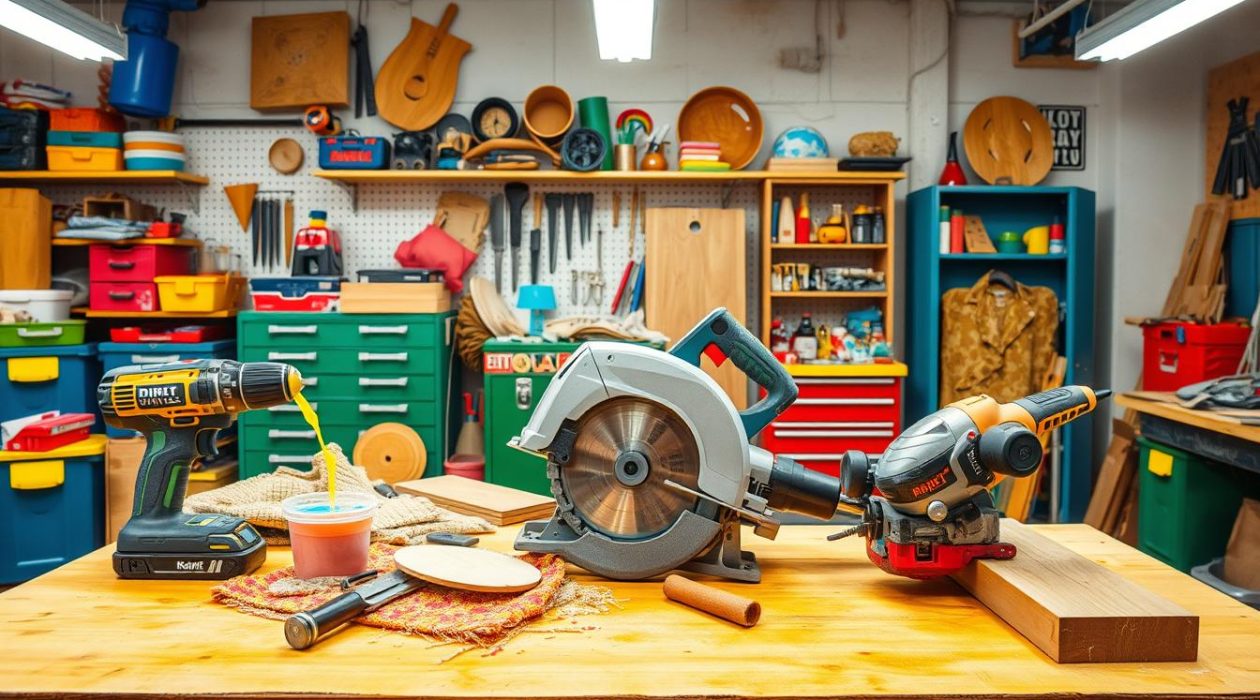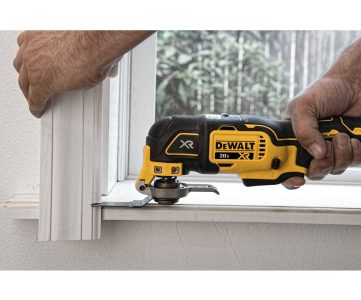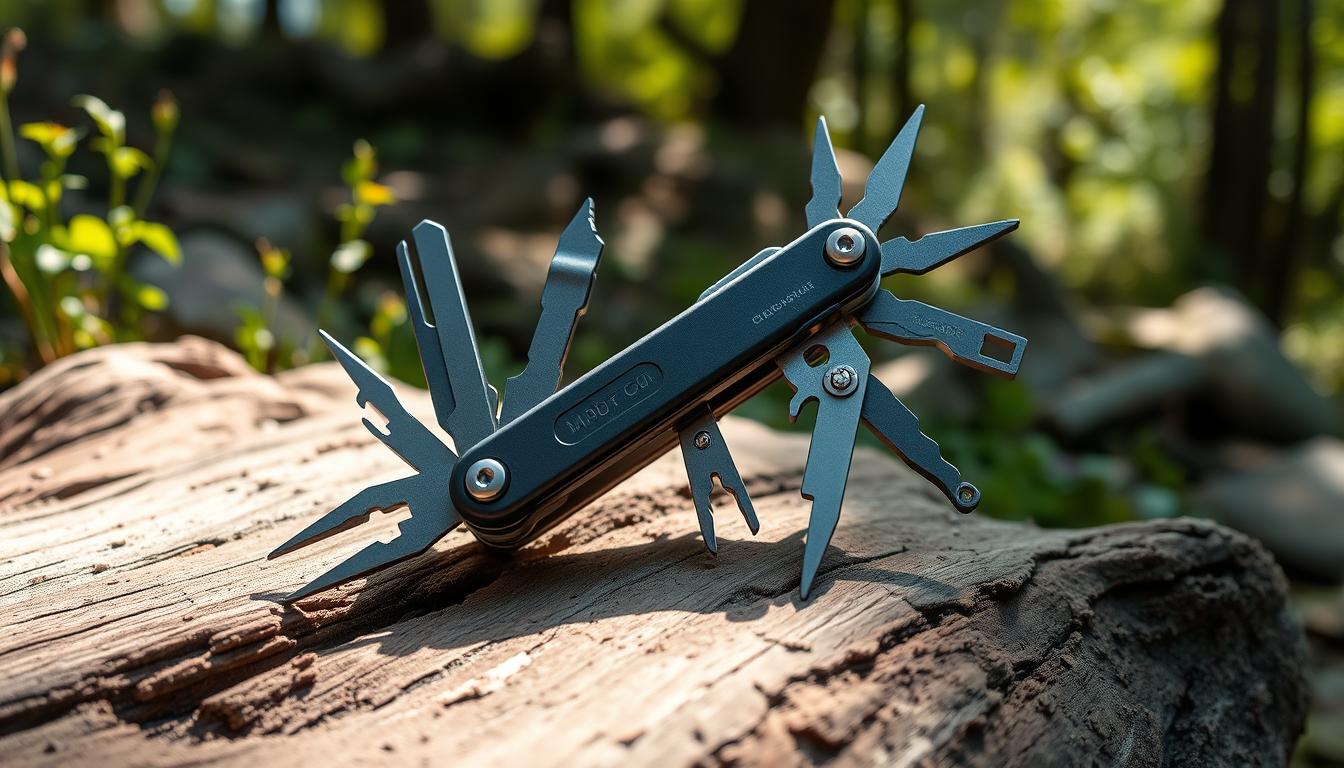Thinking outside the box in DIY projects can lead to amazing results. This is true, notably with power tools. By being creative, you can transform your tools into versatile machines. This elevates your DIY projects to new levels with innovative hacks. Exploring DIY tips and tricks opens up new possibilities for your tools, enhancing your DIY skills.
Using power tools in unconventional ways can revolutionize DIY for enthusiasts. With a creative mindset and a few hacks, you can handle various projects effortlessly. Whether you’re experienced or new, creative tool use can help you achieve professional outcomes with DIY tips and tricks.
By embracing creative tool hacks and DIY tips and tricks, you can revitalize your power tools. This approach can elevate your DIY projects to new heights. So, why not start now and see what you can create with imagination and unconventional tool uses?
Introduction to Creative Tool Hacks
With the right approach, power tools can become versatile machines for a wide range of tasks. From DIY tips and tricks to creative tool hacks, the possibilities are vast. By exploring new tool uses, you can streamline your workflow, save time, and achieve professional results with creative tool hacks.
Key Takeaways
- Thinking outside the box can lead to incredible DIY results
- Creative tool hacks can turn power tools into multi-purpose machines
- DIY tips and tricks can help you achieve professional-looking results
- Unconventional tool uses can streamline your workflow and save time
- Exploring new ways to use your tools can elevate your DIY game
- Creative tool hacks can help you tackle a wide range of projects with ease
Essential Safety Precautions for Creative Tool Use
When exploring unique tool uses and DIY tips and tricks, safety should always be the top priority. Before diving into creative projects, it’s crucial to understand the limitations of your tools. This knowledge helps in taking necessary precautions to minimize risks. It’s important to wear personal protection equipment, such as safety glasses and gloves, to prevent injuries.
A well-prepared workspace is also essential for safe and successful project execution. This involves clearing the area of clutter, ensuring good lighting, and having a first aid kit nearby. By taking these simple steps, DIY enthusiasts can experiment with new tool uses while maintaining a safe working environment.
- Reading and following tool manuals and instructions
- Using tools for their intended purposes
- Regularly inspecting and maintaining tools to prevent malfunctions
By following these guidelines and being mindful of potential hazards, DIY enthusiasts can enjoy a safe and rewarding experience with creative tool uses and DIY tips and tricks.
Revolutionary Power Drill Applications Beyond Holes
A power drill is more than just a tool for drilling holes. It’s a versatile device that can handle a variety of tasks. With the right attachments and a bit of creativity, you can transform your DIY projects. This makes them easier and more efficient.
Examples of its use include mixing materials, driving large screws, and polishing surfaces. By using the right drill bits and attachments, your power drill becomes a multi-purpose tool. It becomes essential in your workshop. For instance, you can use it to:
- Mix concrete or mortar for construction projects
- Drive screws for assembling furniture or other wooden structures
- Polish metal or wood surfaces for a high-gloss finish
These creative tool hacks save time and money by reducing the need for specialized tools. By exploring your power drill’s full potential, you discover new ways to use it. This makes it a crucial part of your DIY toolkit. With practice and experimentation, you can unlock the secrets of unique tool uses and elevate your DIY projects.
By embracing creative tool hacks and unique tool uses, you can revolutionize DIY projects. Discover new possibilities for your power drill. So, why not get creative and explore your power drill’s full potential today?
| Power Drill Application | Description |
|---|---|
| Mixing Materials | Use a power drill to mix concrete, mortar, or other materials for construction projects |
| Driving Screws | Utilize a power drill to drive screws for assembling furniture or other wooden structures |
| Polishing Surfaces | Employ a power drill to polish metal or wood surfaces for a high-gloss finish |
Unexpected Ways to Use Your Circular Saw
Circular saws are incredibly versatile tools, useful for more than just cutting wood. With the right DIY tips and tricks, you can unlock their full potential. This opens up a world of possibilities, from creating custom curves to cutting non-wood materials.
One exciting aspect of using a circular saw is creating unique designs. By employing unique tool uses like curved cuts and beveled edges, you can infuse your projects with personality. Whether crafting furniture or art, a circular saw can help you achieve your desired look.
Creating Custom Curves and Patterns
To craft custom curves and patterns, you’ll need to mix techniques and accessories. Techniques like using a jigsaw or coping saw for intricate curves, or a router for decorative edges, are popular. By experimenting with DIY tips and tricks, you can develop a unique style and create distinctive projects.
Non-Wood Materials You Can Cut
Circular saws aren’t just for wood. They can also cut various non-wood materials, such as plastic, metal, and concrete. The right blade and technique ensure precise cuts and professional results. Some common non-wood materials include:
- Plastic pipes and tubing
- Metal sheets and plates
- Concrete and brick
Decorative Edge Techniques
Decorative edge techniques can elevate your projects’ elegance. Using a circular saw for decorative edges adds a professional finish. Techniques like beveling, rounding, and scalloping are popular. With practice and patience, you can master these and enhance your projects.
Creative Tool Hacks for Your Workshop Setup
A well-organized workshop is crucial for efficient DIY projects. To achieve this, consider implementing creative tool hacks for setting up and optimizing your workspace. This includes tool storage solutions, workbench organization, and creating a functional area that fosters creativity and productivity.
Some DIY tips and tricks for workshop setup include using pegboards for hanging tools, installing shelving units for storage, and designating specific areas for different tasks. By doing so, you can save time and reduce clutter, allowing you to focus on your projects.
Here are some ideas to get you started:
- Utilize vertical space by installing wall-mounted shelves and hooks
- Invest in a workbench with built-in storage and vice
- Implement a labeling system for easy tool identification
By incorporating these creative tool hacks and DIY tips and tricks into your workshop setup, you can create a more efficient and productive workspace. This will enable you to complete projects more quickly and effectively, while also reducing stress and increasing overall satisfaction.
Remember, a well-organized workshop is key to unlocking your full potential as a DIY enthusiast. By implementing these creative tool hacks and DIY tips and tricks, you can take your projects to the next level and achieve professional-grade results.
| Workshop Setup Ideas | Benefits |
|---|---|
| Tool storage solutions | Reduced clutter, increased efficiency |
| Workbench organization | Improved productivity, reduced errors |
| Functional workspace design | Enhanced creativity, increased satisfaction |
Transform Your Sanders into Multi-Purpose Tools
With a bit of creativity, your sander can become more than just a tool for sanding. It can be transformed into a versatile instrument for various tasks. This includes metal surface preparation and custom finish applications.
Preparing metal surfaces with your sander can be incredibly valuable. Proper technique and the right accessories are crucial for the best results. Here are some key points to consider:
- Metal surface cleaning and degreasing
- Choosing the right sanding grit and pattern
- Controlling sanding speed and pressure
But your sander’s capabilities don’t stop there. It can also be used for unconventional polishing methods. By experimenting with different polishing compounds and techniques, you can achieve stunning high-luster finishes on various materials. Some popular methods include:
- Using a sanding drum with a polishing compound
- Applying a polishing paste with a felt wheel
- Utilizing a sanding block with a polishing pad
These creative hacks unlock new possibilities for your sander. They enhance your workshop’s productivity and versatility. By embracing your sander’s full potential, you can elevate your DIY projects. Achieve professional-grade results with ease.
| Tool | Application | Result |
|---|---|---|
| Sander | Metal surface preparation | Smooth, even finish |
| Sander | Unconventional polishing | High-luster finish |
| Sander | Custom finish applications | Unique, professional-grade finish |
Innovative Uses for Heat Guns
Heat guns are incredibly versatile tools with a wide range of applications beyond stripping paint. They can be used for bending plastics, drying materials, and applying heat shrink tubing, among other creative applications. These unique tool uses can help you complete projects more efficiently and effectively.
Some of the most innovative uses for heat guns include:
- Bending and shaping plastics and other materials
- Drying wet materials, such as wood or fabric
- Applying heat shrink tubing to wires and cables
- Removing old adhesive or stickers
- Softening and shaping metal
By incorporating heat guns into your DIY tips and tricks arsenal, you can expand your creative possibilities and tackle a wider range of projects. Whether you’re a seasoned DIY enthusiast or just starting out, unique tool uses like these can help you achieve professional-looking results and take your projects to the next level.
With a little creativity and practice, you can unlock the full potential of your heat gun and discover new and innovative ways to use it in your DIY projects. So why not get started today and see what you can create with your heat gun and a few simple DIY tips and tricks?
Power Tool Attachments You Never Knew Existed
DIY enthusiasts are always seeking new ways to enhance their toolkit. Power tool attachments offer a hidden treasure trove of possibilities. By exploring these attachments, you can uncover innovative DIY tips and tricks for various projects.
Some attachments, like right-angle drills and magnetic drill bits, revolutionize your work. They enable you to access tight spaces and drive screws effortlessly. Also, diamond blades and ceramic blades are game-changers for cutting through hard materials like concrete and tile.
For those looking to enhance their multi-tool capabilities, consider rotary tools or multi-bit drivers. These attachments can handle a multitude of tasks, from grinding and sanding to driving screws and drilling holes. Integrating these hacks into your workflow can significantly improve your DIY efficiency and quality.
- Right-angle drills for tight spaces
- Magnetic drill bits for easy screw driving
- Diamond blades for cutting concrete
- Ceramic blades for cutting tile
Exploring power tool attachments opens up a world of creative possibilities. Whether you’re an experienced DIYer or just starting, these attachments will inspire you to innovate. They encourage you to think beyond conventional limits and achieve remarkable results with your power tools.
Budget-Friendly Tool Modifications
Renewing your tools doesn’t have to drain your wallet. With a dash of creativity, you can revitalize your tools, making them last longer and more versatile. This is where unique tool uses shine, allowing you to give old tools new life and uncover creative tool hacks.
DIY sharpening is a cost-effective way to keep your tools sharp. You can also transform old tools, like turning an old drill into a makeshift mixer or a saw into a DIY metal cutter. These creative tool hacks not only save you money but also encourage innovation in tool usage.
- Use an old router as a DIY planer
- Turn a drill press into a makeshift lathe
- Repurpose a jigsaw as a curved cutting tool
These examples illustrate the many unique tool uses and creative tool hacks waiting to be discovered. With a bit of imagination and experimentation, you can unlock new possibilities for your tools.
Time-Saving Power Tool Shortcuts
Efficiency is crucial when tackling DIY projects. Utilizing DIY tips and tricks can greatly reduce project time. Creative tool hacks are key to streamlining workflows and cutting downtime.
Effective shortcuts include quick project solutions and efficiency-boosting techniques. For instance, using the right drill bits and maintaining tools regularly. These strategies help DIY enthusiasts finish projects faster and with less effort.
Quick Project Solutions
- Using the right drill bits for the job to avoid damage and reduce time spent on repairs
- Implementing creative tool hacks to streamline workflows and minimize downtime
- Applying DIY tips and tricks to overcome common project hurdles
Efficiency-Boosting Techniques
Maintaining tools regularly is vital for their optimal performance. This involves cleaning, lubricating, and storing them in a dry, secure spot. Such practices extend tool lifespan and cut down on maintenance time.
Setup and Storage Tricks
Proper tool setup and storage save time and boost productivity. Organizing tools logically and accessibly helps find them quickly. This reduces downtime and enhances efficiency. By integrating these shortcuts, individuals can complete DIY projects more efficiently, leveraging their creative tool hacks and DIY tips.
Common Mistakes to Avoid When Repurposing Tools
Exploring unique tool uses requires caution. Safety is paramount, as DIY projects can alter a tool’s original function. It’s vital to grasp the tool’s limitations and adhere to safety guidelines.
Common errors include overloading tools, disregarding safety rules, and neglecting maintenance. These mistakes can cause accidents, damage the tool, or result in poor outcomes. Being cautious helps DIY fans harness the power of tools safely and effectively.
- Always read and follow the manufacturer’s instructions for the tool.
- Understand the tool’s limitations and capacity before attempting a new use.
- Wear proper safety gear, such as gloves and safety glasses, when working with power tools.
By following these guidelines, DIY enthusiasts can maximize their tools’ potential. They can achieve successful projects, leveraging unique tool uses and DIY tips and tricks.
Revolutionize Your DIY Projects with Smart Tool Hacks
This article has delved into the vast potential of your power tools. By adopting DIY tips and tricks, you can turn your workshop into a creative and efficient space. We’ve shared insights on using drills and saws in new ways, along with innovative modifications and attachments. These ideas will help you approach projects with fresh inspiration and achieve professional-grade results.
The secret to unlocking your tools’ full potential is to think beyond the usual. Be bold, experiment, and challenge traditional methods. With creativity and a focus on safety, you can transform your DIY endeavors. This will take your skills to unprecedented levels.
Now, it’s time to explore the realm of creative tool hacks and unlock your tools’ true capabilities. The opportunities are limitless, and the joy of mastering new skills will be both practical and fulfilling. Get ready to dive into the world of DIY with renewed enthusiasm!




